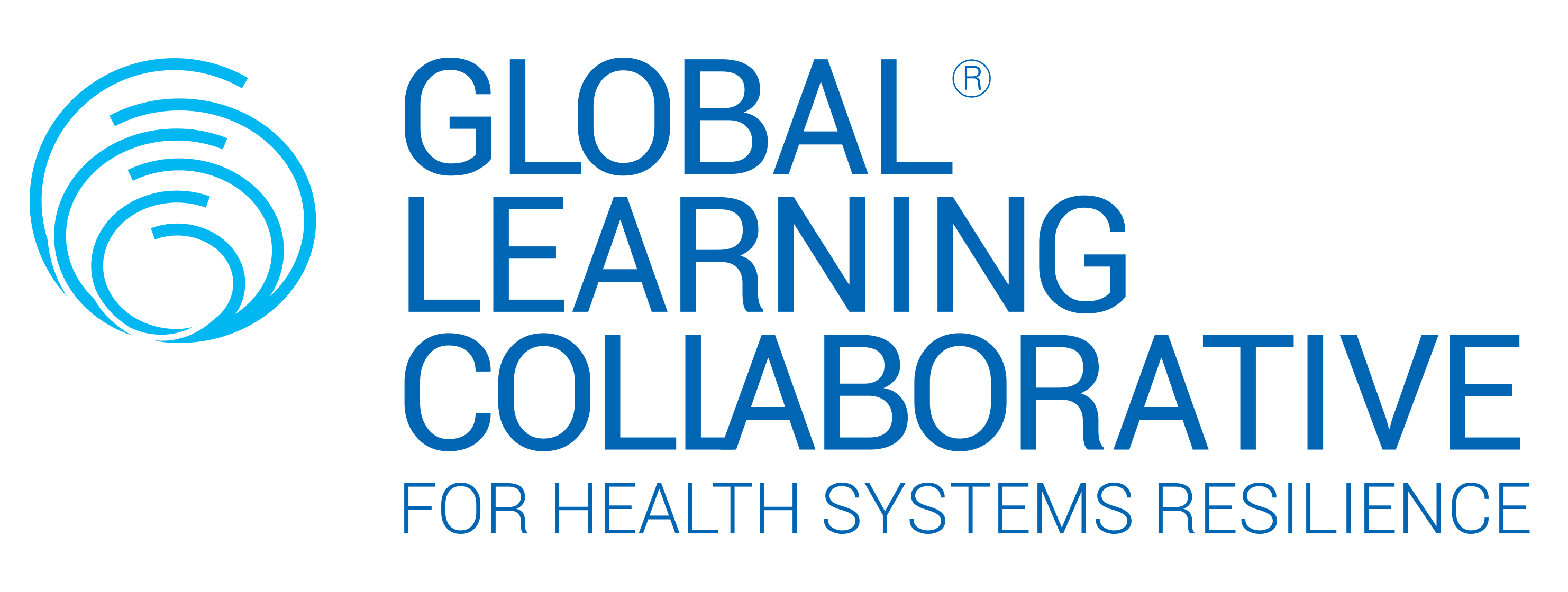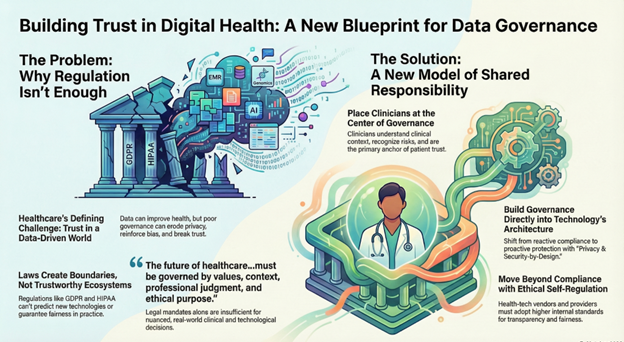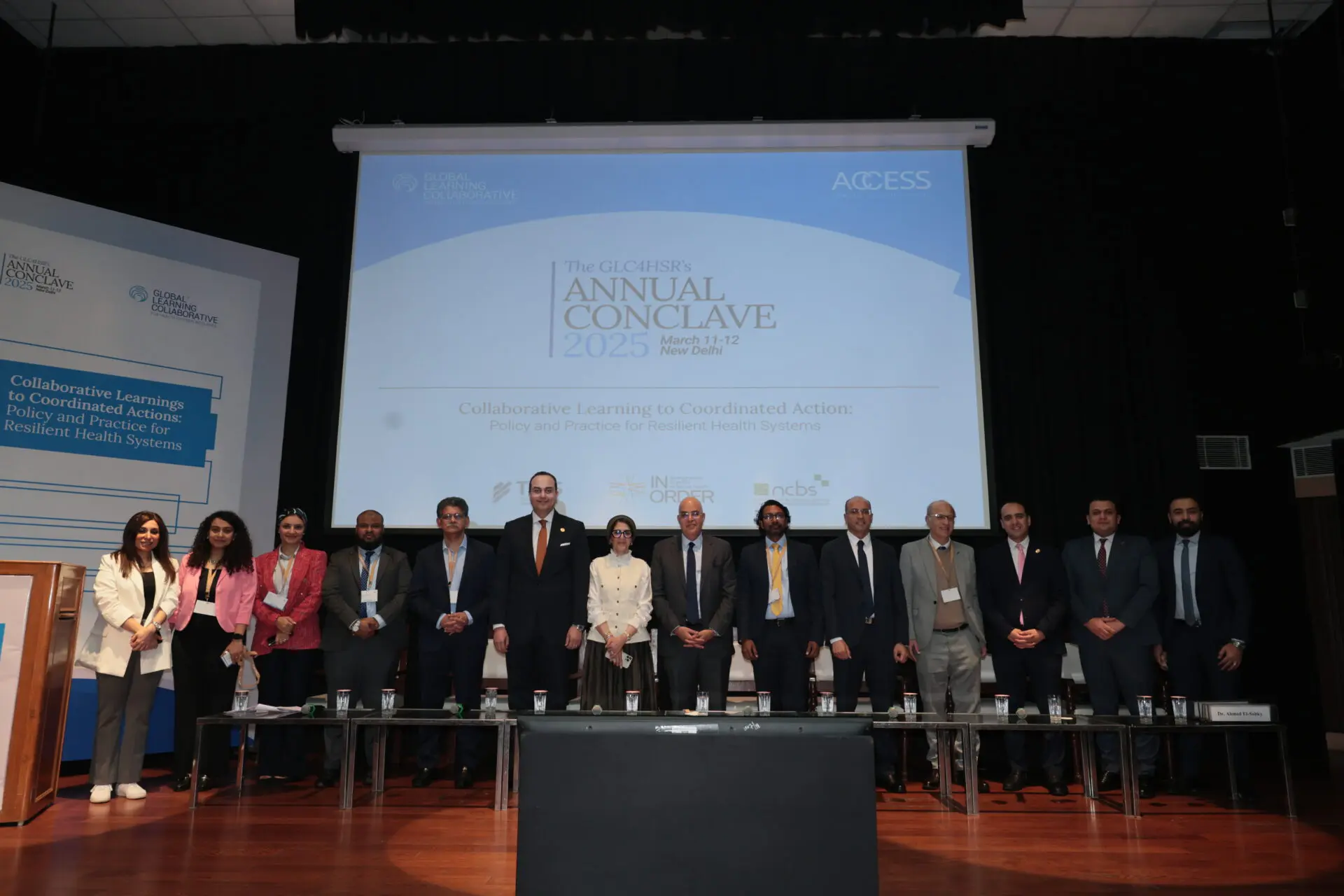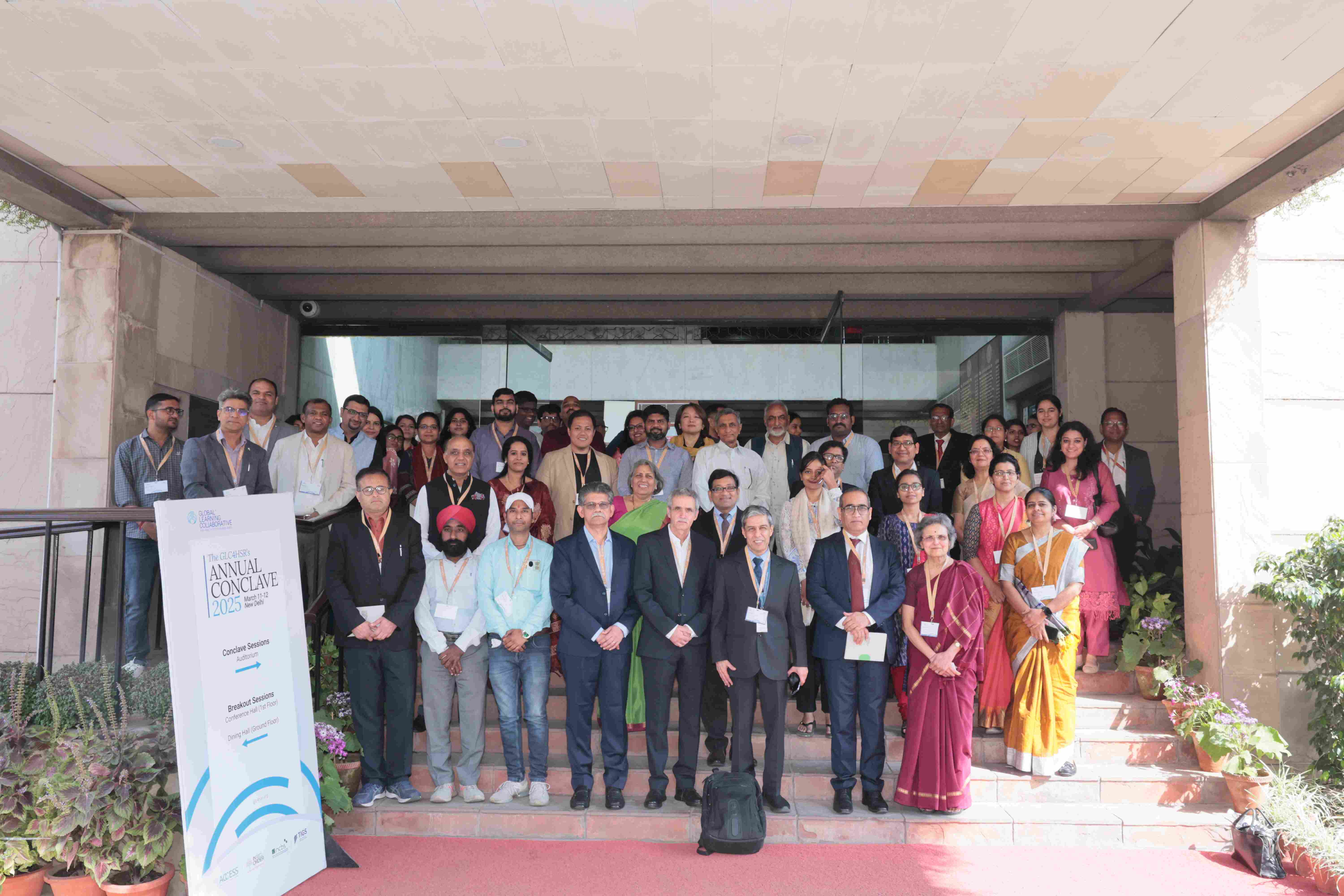One Health Surveillance: Building a United Front for Disease Prevention in India
Opinion Pieces ▪ Apr 26, 2024
Authors: SreeMeena Satyanarayana, Dr. Shrikant Kalaskar, Soumya Pranathi (ACCESS Health International)
A paradigm shift in disease surveillance
The notion of One Health has grown in importance and relevance as the globe has become more linked. This is especially true given the multiple health challenges that overlap with human, animal, plant, and environmental health.The recent outbreak of zoonotic illnesses like as COVID-19, which has caused devastation throughout the world, has highlighted the need to address issue (1). Pathogens do not adhere to these borders. They easily transfer across species and the environment. This connection necessitates a more holistic disease prevention plan that recognises the intricate interplay between human, animal, and environmental health. One Health Surveillance (OHS) is a collaborative approach to disease surveillance that spans many sectors (2). OHS develops a more strong and unified disease intelligence system, forming a united front against new infectious threats.
India: A Case for One Health.
India's unique geography makes a compelling argument for One Health. This highly populated country is rich in complicated ecosystems in which human settlements coexist with considerable animal production, providing a breeding ground for zoonotic illnesses. Crowded urban and rural areas encourage intimate human-animal interaction, which may lead to pathogen spillover (3). Large-scale animal husbandry techniques can accelerate disease spread within animal populations, increasing the risk of transmission to people who interact closely with animals (4). Climate change, habitat loss, and deforestation all contribute to increased complexity and danger. Disrupting ecological equilibrium and increasing human-wildlife interactions creates opportunities for zoonotic spillovers (5).
Unfortunately, India's disease surveillance systems are fragmented and lack the capacity to adequately monitor health risks in the human, animal, and environmental sectors. This is because the scope of One Health specialists' job extends beyond a few government ministries, such as health, agriculture, and the environment. It also includes other ministries, such as Science and Technology, Traditional Medicine (AYUSH), and Commerce and Industry, all of which play key roles in the larger framework. Independent research organizations (such as ICMR and ICAR) and non-profit organizations are also critical in aiding the work on One Health in India (10).
Furthermore, the cost-effectiveness of the One Health approach compared to existing treatments is unknown, limiting government support and resource allocation.A lack of resources, such as skilled workers and well-equipped laboratories, makes it even more difficult to execute One Health efforts (6).
One Health Surveillance: A powerful tool.
One Health Surveillance (OHS) emerges as an effective technique for reducing the dangers presented by zoonotic infections. By encouraging collaboration among human health experts, veterinarians, environmental scientists, and other important stakeholders, OHS unlocks many significant benefits:
Early detection and outbreak prevention: Integrated disease surveillance enables faster detection of possible hazards. This allows for faster reaction and control measures to be adopted, preventing epidemics from spreading (7).
Improved risk assessment: A unified perspective of disease trends across all sectors allows for a more thorough knowledge of risk factors and transmission dynamics. This understanding leads to more effective prediction and preventative methods (8).
Targeted actions: OHS data can help guide interventions for specific animal populations, environmental conditions, or high-risk human groups. This focused strategy increases the efficacy of disease control efforts (9).
Despite the evident benefits, incorporating OHS into India's current monitoring systems poses certain obstacles. This includes:
Fragmented data collection: Surveillance data is presently gathered and handled by many government agencies with poor interoperability, preventing a comprehensive view of illness trends (3, 10).
Limited inter-sectoral communication: Effective OHS necessitates regular contact and information exchange among the human, animal, and environmental health sectors. However, communication links between these traditionally compartmentalized departments are still restricted (3, 8, 21).
Resource Constraints: Building a strong OHS system necessitates major investments in infrastructure, people training, and data management systems. Resource constraints at the national and state levels can stymie growth (3-11).
These problems, however, can be turned into opportunities. India can significantly improve its OHS capabilities by using existing infrastructure, promoting cooperation, and wisely allocating resources.
India's One Health Surveillance system is being strengthened through several efforts.
National Action Plan for One Health: The Government of India is now working on a National Action Plan for One Health. This plan is required to lay forth a thorough strategy for integrating OHS into relevant industries, addressing important issues, and encouraging collaboration. The Union Health Ministry has just launched the National Action Plan for the Prevention and Control of Snakebite Envenoming (NAP-SE) (12).
Strengthening Existing Programmes: Existing disease monitoring programmes, such as the Integrated Disease monitoring Programme (IDSP) for human health and the National Animal Disease Control Programme (NADCP) for animal health, can provide excellent platforms for OHS integration.
Several programmes are overseen by the Centre for One Health, which is part of the National Centre for Disease Control. These include National Rabies Control Programmes, the National One Health Programme for Zoonoses Prevention and Control, the Leptospirosis Prevention and Control Programme, and the Snakebite Prevention and Control Programme [15].
The recently established National One Health Mission is a flagship effort aimed at improving collaboration across sectors and establishing a strong One Health surveillance system. By standardizing data collecting and reporting processes, these programmes can give a more comprehensive picture of disease risks (16).
Way Forward:
Increasing Laboratory Capacity. A network of well-equipped laboratories for rapid diagnosis and pathogen detection across industries is essential for efficient OHS. Strengthening current laboratory infrastructure and encouraging collaboration between human and veterinary laboratories would be critical (13).
Promoting Inter-sectoral Collaboration: To succeed, One Health Surveillance needs a united front. This involves encouraging collaboration among human health experts, veterinarians, environmental scientists, and other stakeholders. Multi-sectoral task groups and cooperative training programmes at all levels, whether national or state, can help to break down silos, create trust, and foster a sense of shared responsibility for disease prevention (9).
Building a Strong staff: A trained staff with knowledge of OHS principles is vital. This involves educating current people in OHS procedures and cultivating a new generation of One Health experts with transdisciplinary abilities. (17)
Conclusion:
India can establish a strong OHS system that protects human, animal, and environmental health by recognising the obstacles, harnessing existing resources, and encouraging collaboration. They might be through.
Community Engagement: Improving public knowledge of OHS and its significance in disease prevention is critical. Educational campaigns can help communities identify possible illness risks and take preventative steps. Furthermore, community involvement in disease monitoring activities, such as reporting odd animal fatalities or human diseases, can give critical early warning signs (18).
OHS relies heavily on effective data exchange and analysis. A unified platform for data collection, analysis, and dissemination across sectors will be required. This information may then be utilised to improve risk assessments, direct targeted actions, and evaluate disease control efforts (19).
Investment in R&D: Continued research into zoonotic illnesses, pathogen transmission patterns, and the development of quick diagnostic techniques are critical to improving OHS capacities. Collaboration between Indian and foreign scholars can help speed development in these areas (20).
The One Health initiative calls for rapid action, concentrating on crucial capacity-building and collaborative governance frameworks at all levels. This approach emphasizes systems thinking and capacity building which are critical for efficient cross-border coordination and response to health hazards. The strategy also emphasizes the need to manage the growing threat of zoonotic diseases and pandemics, which endanger human, animal, and environmental health.
The goal of providing targeted actions and improving surveillance is to lessen the effects of these dangers and avoid future epidemics. Additionally, addressing the silent epidemic of antibiotic resistance is critical to global health security. Preserving antimicrobial effectiveness and encouraging appropriate use across the human, animal, and plant health sectors becomes critical when working together. Furthermore, by including environmental factors in the One Health approach, the plan recognizes the link between environmental health and general well-being.
Finally, adopting a One Health strategy signifies a paradigm change in disease surveillance by acknowledging the complex link between human, animal, and environmental health. For India, adopting this strategy provides a unified front against new infectious diseases, protects public health, and fosters a healthier future for all of its people(22).
References
- Yasobant, Sandul1,2; Patel, Krupali1,3,; Saxena, Deepak4; Falkenberg, Timo5,6. COVID-19 in India: Making a Case for the One Health Surveillance System. Indian Journal of Public Health 64(6):p 135-138,June 2020 https://journals.lww.com/ijph/fulltext/2020/64060/covid_19_in_india__making_a_case_for_the_one.17.aspx
- World Health Organization (WHO): One Health https://www.who.int/news-room/questions-and-answers/item/one-health
- Asaaga FA, Young JC, Oommen MA, Chandarana R, August J, Joshi J, Chanda MM, Vanak AT, Srinivas PN, Hoti SL, Seshadri T, Purse BV. Operationalising the "One Health" approach in India: facilitators of and barriers to effective cross-sector convergence for zoonoses prevention and control. BMC Public Health. 2021 Aug 6;21(1):1517.. https://www.ncbi.nlm.nih.gov/pmc/articles/PMC8342985/
- Aggarwal, D., & Ramachandran, A. (2020). One Health Approach to Address Zoonotic Diseases. Indian Journal of Community Medicine : Official Publication of Indian Association of Preventive & Social Medicine, 45(Suppl 1), S6. https://doi.org/10.4103/ijcm.IJCM_398_19
- The Tripartite (FAO, OIE, WHO) - One Health: https://www.who.int/europe/initiatives/one-health
- Dahal R, Upadhyay A, Ewald B. One Health in South Asia and its challenges in implementation from stakeholder perspective. Vet Rec. 2017 Dec;181(23):626. doi: 10.1136/vr.104189. Epub 2017 Oct 30. PMID: 29084821.
- World Organisation for Animal Health (OIE) - The Value of One Health https://www.woah.org/en/what-we-do/global-initiatives/one-health/
- Food and Agriculture Organization of the United Nations (FAO): One Health https://www.fao.org/one-health/en
- Centers for Disease Control and Prevention (CDC): One Health https://www.cdc.gov/onehealth/index.html
- Yasobant S, Saxena D, Bhardwaj P, Quazi ZS. One Health System Strengthening in India: Co-creating One Health Workforce to Combat Future Pandemics. Indian J Community Med. 2023 Nov-Dec;48(6):814-816. doi: 10.4103/ijcm.ijcm_100_23. Epub 2023 Dec 1. PMID: 38249704; PMCID: PMC10795864.
- One Health Operational Framework for Zoonotic Disease Surveillance https://www.fao.org/3/ca2942en/ca2942en.pdf
- Minstry of Health and Family Wefare- Press Release https://pib.gov.in/PressReleasePage.aspx?PRID=2013803
- Integrated Disease Surveillance Programme (IDSP): https://idsp.mohfw.gov.in/
- National Animal Disease Control Programme (NADCP): https://dahd.nic.in/schemes/programmes/nadcp
- Centre for One Health - The National Centre for Disease Control (NCDC), Government of India. https://ncdc.mohfw.gov.in/centre-for-one-health/
- National One Health Mission – Office of Principal scientific adviser https://www.psa.gov.in/innerPage/psa-initiatives-covid/one-health/4053/4053
- Berezowski J, Akkina J, Del Rio Vilas VJ, DeVore K, Dorea FC, Dupuy C, Maxwell MJ, Singh VV, Vial F, Contadini FM, Streichert LC. One Health Surveillance: perceived benefits and workforce motivations. Rev Sci Tech. 2019 May;38(1):251-260. doi: 10.20506/rst.38.1.2957. PMID: 31564726.
- One Health Operational Framework for Zoonotic Disease Surveillance https://www.fao.org/3/ca2942en/ca2942en.pdf (Chapter 5: Risk Communication and Community Engagement)
- The World Organisation for Animal Health (OIE) - The World Animal Health Information System (WAHIS) https://www.woah.org/en/what-we-do/animal-health-and-welfare/disease-data-collection/world-animal-health-information-system/
- One Health Global Network http://www.onehealthglobal.net/
- Yasobant, S.; Saxena, D.; Tadvi, R.; Syed, Z.Q. One Health Surveillance System in Gujarat, India: A Health Policy and Systems Research Protocol for Exploring the Cross-Sectoral Collaborations to Detect Emerging Threats at the Human-Animal–Environment Interface. Trop. Med. Infect. Dis. 2023, 8, 428. https://doi.org/10.3390/tropicalmed8090428
- https://www.who.int/publications/i/item/9789240059139






